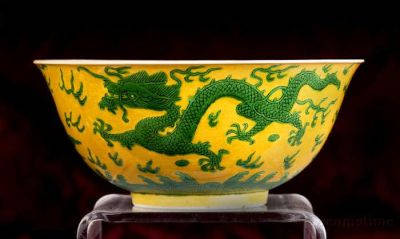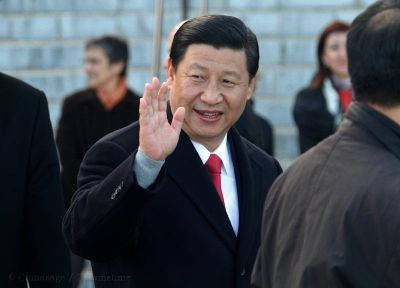Chinese Jade - Treasured gemstone
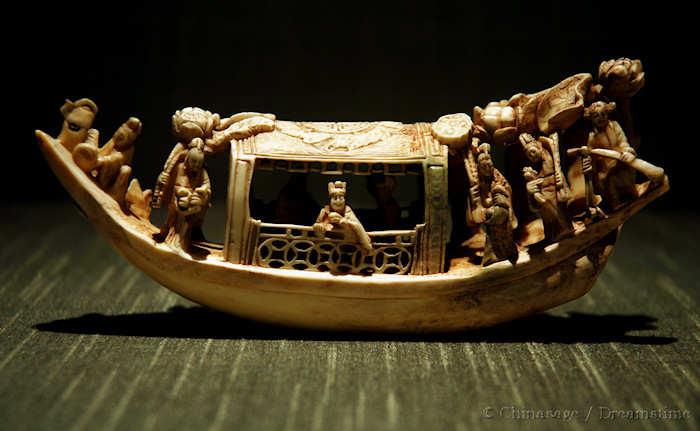

Jade has been the most treasured gemstone in China for at least 8,000 years. Considered indestructible and unchanging jade retains a powerful influence in Chinese art and culture. In many ways, jade in China holds the same rank as gold and diamonds in the west, it is also highly prized in other countries in Asia; Central America and Australasia. For the Beijing Olympic Games in 2008 the medals were inlaid with jade. Back in the Han dynasty emperors were buried in suits made of thousands of tiny rectangles of jade sewn together with gold wire in the belief that jade would preserve the body. Examples of these magnificent suits can be found in Nanjing and Hefei, Anhui (Liu Sheng's tomb). Fine jade ornaments found in Liaoning from 3500BCE and Jiangsu from 2500BCE, show the very long history of working in jade. Jade is considered to have five qualities: sheen, sound (when struck), uniformity, strength and tough texture which map onto desirable human virtues.
Traditionally, a rod of jade was given when someone reached the age of 70, it was called a jade scepter 玉杖 yù zhàng or dove staff 鸽杖 gē zhàng and measured one foot long with usually a dove carved at one end to symbolize longevity. Ceremonial insignia of office in ancient China include the jade scepter (ruyi) and spear (戈 gē).
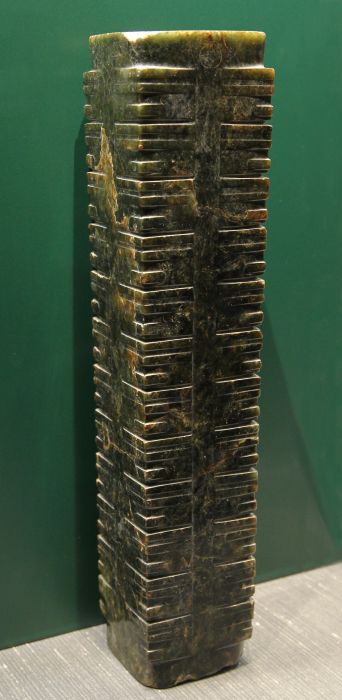
True jade comes in a variety of colors and is either the mineral jadeite or nephrite. Fashions in jade come and go, with different colors gaining popularity, currently white or cream jade is the most highly prized; this is often called ‘mutton fat jade’ and symbolizes purity. Jade according to legend came from holy mountains, and nephrite was mined for centuries in the Kunlun mountains near Hotan, on the south side of the Turpan basin in Xinjiang. The Queen mother goddess of the West (西王母 xī wǎng mǔ) is often shown by a jade pool. She was reputed to live in the Kunlun mountains. Boulders of jade can still be found on the banks of the Karakax and Yurungkash rivers there. It was mined as rough boulders or picked out of river beds as polished pebbles.
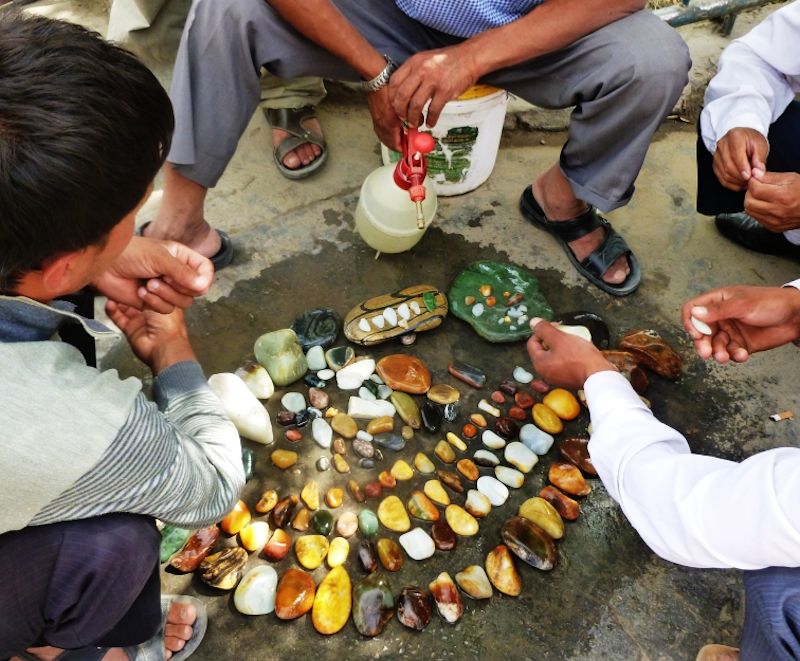
The most common color of the Jadeite form is light green that comes mainly from northern Burma. Qing Emperor Qianlong so loved the lustrous green jade from Burma that he launched three unsuccessful campaigns to take over the mines. Nearly everything he touched had to be made of jade (cups, pens, tables, bowls, pins, … everything). Under Emperor Qianlong the green colored jade became the most popular kind. To this day the supply of jade comes mainly from the mines near Hpakant ➚ in the mountains of northern Burma - a very profitable operation controlled by the Burmese military.
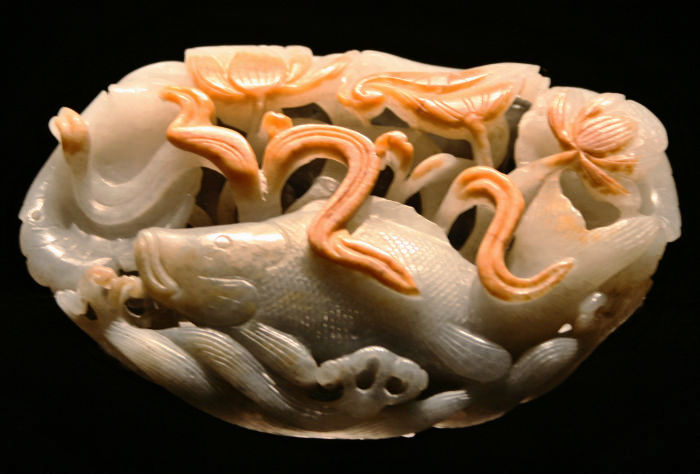
Jade in characters
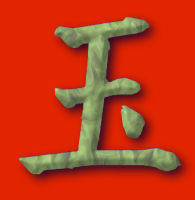 The character for jade 玉 yù shows three pieces of jade strung together that represent virtue, beauty and rarity. The addition of the dian (dot) stroke completes the character and distinguishes it from 王 wǎng the character for monarch, while still illustrating the royal connection. The modern form of the character for kingdom is 国 guó which has the jade character enclosed in a boundary to represent ‘country’ and so jade is a component of the name for the country of China - Zhongguo 中国. Jade as a character radical is used in a range of other characters such as 现 xiàn ‘appear’; 瑰 guī ‘precious’; 玷 diàn ‘blemish’ and 理 lǐ ‘principle’. The English name ‘jade’ comes from the Spanish ‘piedra de ijada’ ➚ from the belief that powdered jade was an effective medicine for kidney ailments. Jade in Chinese sounds the same as 愈 yù a character for ‘heal’ and this may be another reason that jade suits were made for the deceased and why jade is kept as a lucky charm to keep illness away.
The character for jade 玉 yù shows three pieces of jade strung together that represent virtue, beauty and rarity. The addition of the dian (dot) stroke completes the character and distinguishes it from 王 wǎng the character for monarch, while still illustrating the royal connection. The modern form of the character for kingdom is 国 guó which has the jade character enclosed in a boundary to represent ‘country’ and so jade is a component of the name for the country of China - Zhongguo 中国. Jade as a character radical is used in a range of other characters such as 现 xiàn ‘appear’; 瑰 guī ‘precious’; 玷 diàn ‘blemish’ and 理 lǐ ‘principle’. The English name ‘jade’ comes from the Spanish ‘piedra de ijada’ ➚ from the belief that powdered jade was an effective medicine for kidney ailments. Jade in Chinese sounds the same as 愈 yù a character for ‘heal’ and this may be another reason that jade suits were made for the deceased and why jade is kept as a lucky charm to keep illness away.
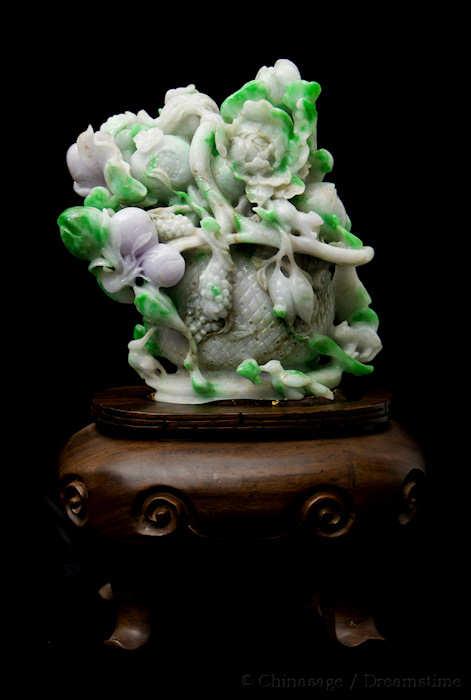
Composition of Jade
Jadeite is a sodium aluminum silicate (NaAlSi2O6) in the pyroxene group of minerals. It is quite rare and occurs only in low grade metamorphic rocks ➚ (sedimentary rocks that have experienced a short period of increased pressure and temperature). Jadeite tends to be light to emerald green in color. The main modern source of jadeite are mines in neighboring Burma. In October 2016 a huge block was found ➚ and valued at $180million.
Nephrite is the mineral considered as ‘true jade’ (zhen yu) and was used before Jadeite became available in the 18th century after Emperor Qianlong extended his empire west into Xinjiang mainly to get hold of supplies of jade. Nephrite is a different mineral - a tremolitic or actinolitic amphibole ➚ but like jadeite is also metamorphic in origin. It has a more varied composition which gives a wider range of colors - when nephrite contains a lot of iron it can even be brown or orange. Nephrite is softer than jadeite and was mined extensively in the Kunlun mountains ➚ that form the border between Xinjiang and Tibet. Due to the variation of color with many bands and veins it is a matter of luck as to how useful an excavated block of jade will turn out to be. Unfortunately much jade on sale is counterfeit and may be soapstone or other cheaper materials. True jade can usually be distinguished by its hardness (it can not be marked by a steel knife) and its coldness to the touch.
One of the most famous jade sculptures is the Jadeite Cabbage ➚ on display at the National Palace Museum in Taipei. A piece of jade was chosen that naturally grades from cream to dark green to match a real cabbage. It was expertly carved in the Qing dynasty. Hidden within the leaves are a locust and bush cricket and they symbolize female virtue. The exhibit is very popular with long queues forming to catch a brief glimpse of it each day. The best jade sculptures are those that have taken advantage of the color variation and natural flaws to make a pleasing composition.
Associations with Jade
The Jade Emperor is the supreme god (玉皇帝 yù huáng dì) of the Daoist tradition. Emperor Zhenzong of the Song dynasty used a supposed mystical connection with the Jade Emperor to bolster his rule. Jade exemplifies all that is good and so is associated with the noble man (junzi ➚) of Confucian ideals. Everyone would have something made of jade about their person. By legend it is considered as crystallized moonlight (a very yin substance). Many colloquial expressions have jade associated with parts of the female body, often complimentary but with a sexual connotation.
Confucius quote
Confucius extolled the virtues of jade in this lengthy tribute. Jade is almost synonymous with virtue.
“Jade is precious not because it is rare, but because the quality of jade corresponds to virtue. It relates to virtues like benevolence, wisdom, righteousness, propriety, loyalty, and trustworthiness, and it also corresponds to the ways of the heaven and earth. Jade is mild and gentle, just like benevolence. Jade has a fine texture yet it is solid, just like a wise person; with a meticulous and thorough way of handling affairs. Though jade has edges and corners, it is not sharp and will not hurt others, resembling a sense of justice and uprightness. When the jade is hung, it symbolizes restraint and prudence. When it is struck, it releases a clear, resonant sound like music. Though jade is beautiful, blemishes do not obscure its merits. Just like loyalty, it is without bias and without the need to conceal. Also the color of jade can be seen from all angles. Just like trustworthiness, a person's behavior is consistent with words. Even in a darkened room, a person is trustworthy and does not cheat others. Jade is crystal like, glittering and translucent as a white rainbow, like the white clouds of heaven, which harmonize the heavens and correspond to heavenly principles. The spirit of the jade can be seen in the landscape, like ‘when jade lies in a deep pool, it brings enchantment to the river. When jade rests on the mountain, the grass becomes luxuriant.’ Wherever located, it is bound to be a blessing, just like a noble demeanor can harmonize many things and benefit the whole region. Everyone cherishes jade because people respect and admire virtue. The noble virtues are the manifestation of heavenly attributes.”
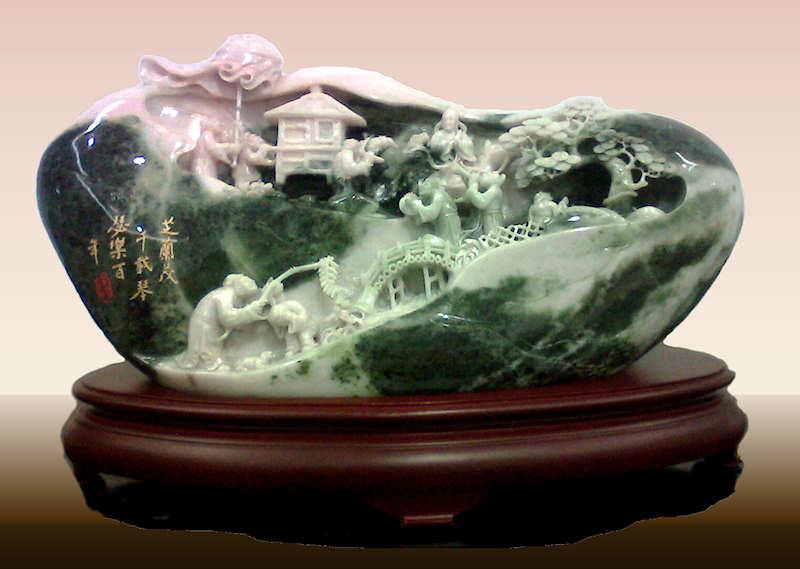
It shows the variability of color within a block of jade. Here the artist has used the variation to exquisite effect.
Image by Artfiber ➚ available under a Creative Commons license ➚
History of jade in China
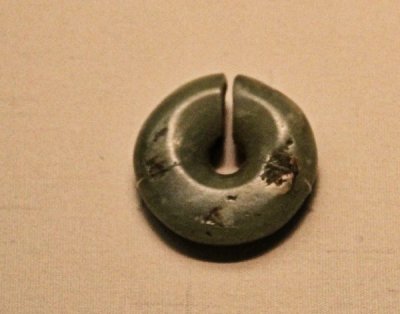
Jade was used as a tough stone originally for axes and knives in the Neolithic Age, as a superior alternative to flint. As it was so rare and precious it was only used at the Imperial court for ritual purposes. Some of the oldest jade pieces are in two forms: circular disks (bi ➚ 璧) with a central perforation which symbolized heaven and jade ‘cong’ 琮 (a square outline encasing a cylindrical hole) symbolized earth. Some ritual weapons were made from jade, but when iron became available the use of jade declined as although it is hard it is rather brittle making it unsuitable for making sharp edges. Some of the earliest pieces have been found near Chifeng in Inner Mongolia from 6,000BCE. Local deposits of nephrite in this area and in Liaoning produced small pieces that were carved into animal forms mainly as grave goods. In the period up to the Shang dynasty a gradual increase in the variety of forms developed and the carving became more intricate.
From early times jade was used for funerary ornaments with the clear meaning of immortality as the jade never loses its luster. A specific form of jade (塞 sāi) was used to seal each of the nine orifices that would otherwise let the divine spirit escape the body. Another form called 琀 hán was placed in the mouth and 瓁 wò placed in the hands as a gift to other spirits in the after-life. It was considered a substance that was a conduit to heaven.
The Shang dynasty (1600-1100BCE) saw the extensive use of bronze and some of the techniques and designs were then used in jade carving. The Taotie 'greed god' was a popular emblem and some jade pieces were now made of multiple interlinked pieces. On a more utilitarian note jade was found to be the best substance for rings to protect an archer's finger when using a bow. Different colors became fashionable not just light cream.
In the following long Zhou dynasty period the shift towards decoration rather than ritual continued; with access to better quality jade from Hotan (Kunlun mountains) larger, more intricately carved jade became possible. Jade was used not to make swords but to add ornaments to decorate it and the sheath. Towards the end of this period and the rise of the Qin kingdom jade became highly prized. All the seals used by senior officials were then made from jade.
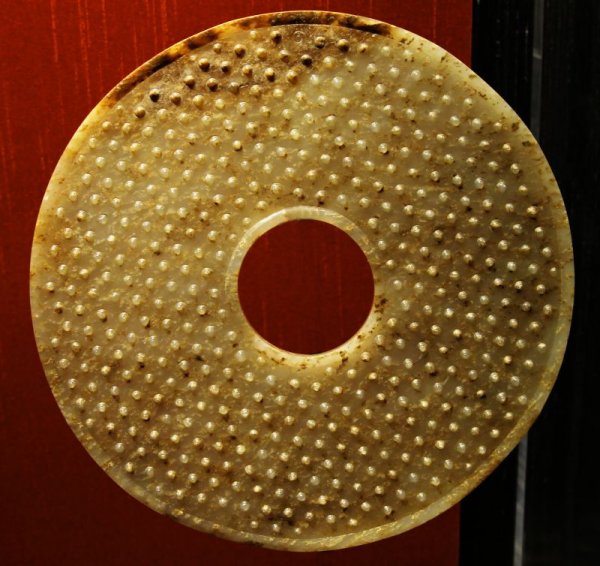
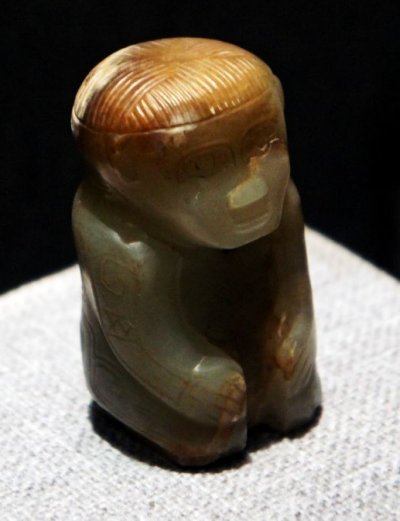
In the Han dynasty jade became more widespread with more artistic forms (animal figures were popular). Pure white jade became fashionable. It was at this time that it became the fashion for the very rich to be buried in suits made of many rectangular jade pieces (jade suits). They were made in six parts and laced together with gold, silver or copper thread. Unfortunately grave robbers soon exploited this new source of jade and the fashion soon passed.
After the Han dynasty came the long Period of disunity when transport links to the source of jade were disrupted. Designs began to be influenced by Buddhist belief and designs. It became a fashion to eat jade in powdered form in the belief it would bestow immortality.
Widespread use
After the re-unification the Sui and Tang dynasties the supply of jade resumed and more and more people succumbed to its charm and its price dropped. There was a wider range of subjects and greater usage: belts made with jade plaques, cups, combs and hairpins as well as animal carvings. The jade working center at Yangzhou, Jiangsu on the Yangzi river became established. This was followed by the Song dynasty when China had something of a cultural renaissance. As with Song porcelain, jade designs were bolder and simpler using natural designs. Song Emperor Huizong ➚ was the first Emperor to build up a large collection of jade objects. During the following Yuan (Mongol) dynasty a large piece of jade the Dushan jade jar ➚ weighing 3,084 kgs [3 tons] was carved to make a giant wine jar. It was the first large scale jade sculpture. It is famous for having a lucky swastika carved in its base and can now be seen at Beihai Park, Beijing.
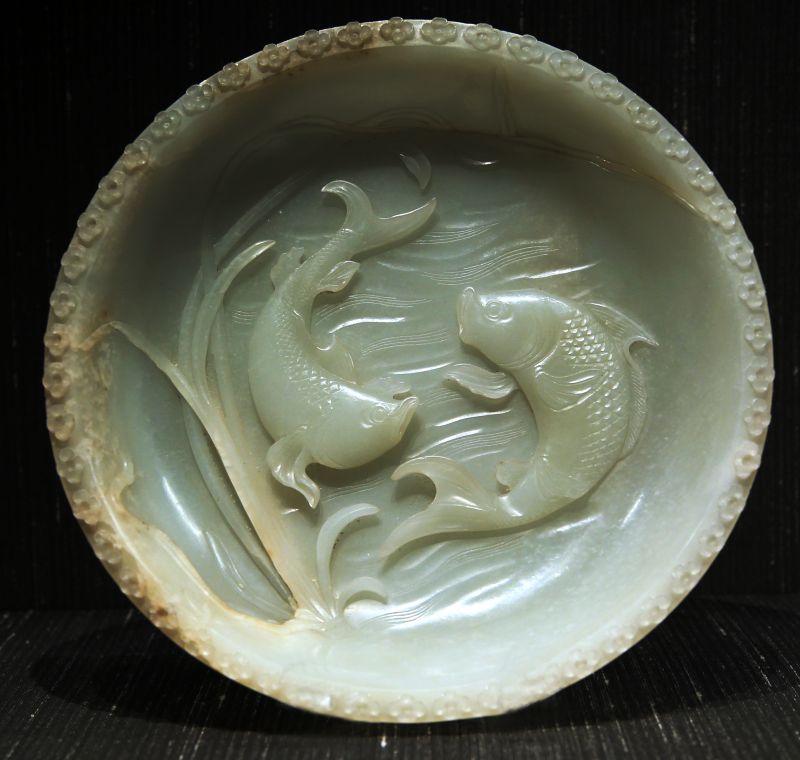
Next Festival
Tuesday 17th February 2026
Chinese New Year - Spring Festival (Chūnjié 春节)
Read more...
The Ming dynasty followed and further refinement in carving and polishing jade emerged. Some pieces of jade had gold or silver added to highlight the design. More jade became available from the trade routes to Sri Lanka. The jade workshops now became famous enough that craftsman would autograph their work for the first time. Designs now used the wide range of available symbolism to give 'hidden' meanings to sculptures. Now that jade was more widely seen outside courtly circles avid collectors began to seek out pieces of ancient jade as well as new pieces.
Qianlong's fixation
The last Imperial dynasty, the Qing (1644-1911), continued the trend to wider availability of jade and even more diverse range of designs. However it was Emperor Qianlong who had a real mania for jade. Nearly everything he touched had to be of jade. He launched conquests to western China with the intention of capturing the newly discovered Burmese jade mines. He sought out the Dushan jade jar in Beijing where it languished and gave it pride of place as well as having replicas made of it. He collected 10,000 pieces of jade and wrote over 800 poems about his most prized pieces of jade. It was an all consuming passion; he had huge multi-ton boulders transported from Xinjiang via Beijing to the jade workshops of the lower Yangzi. Some large boulders took hundreds of people five years to transport. Roads and bridges were built solely for the transport of these huge jade blocks. When it reached the workshops jade craftsmen would work in shifts around the clock to fashion it quickly. Later on in the Qing more and more old jade was recycled and collected. At one time it was fashionable to heat the jade so that it developed a bright yellow powdery coating. The last great figure of the Qing dynasty, Dowager Empress Cixi, was also an avid collector and used jade for bowls, chopsticks, hairpins and rings. Her burial place contained many fine pieces of jade.
During the long ‘period of humiliation’ 1860-1949 jade became something that could only really be afforded by foreign collectors. Under Mao the culture of prizing ancient things came under active suppression. It is only been since about 1980 that jade workshops have re-opened and new artists in jade have developed new ways of produced innovative jade carvings.
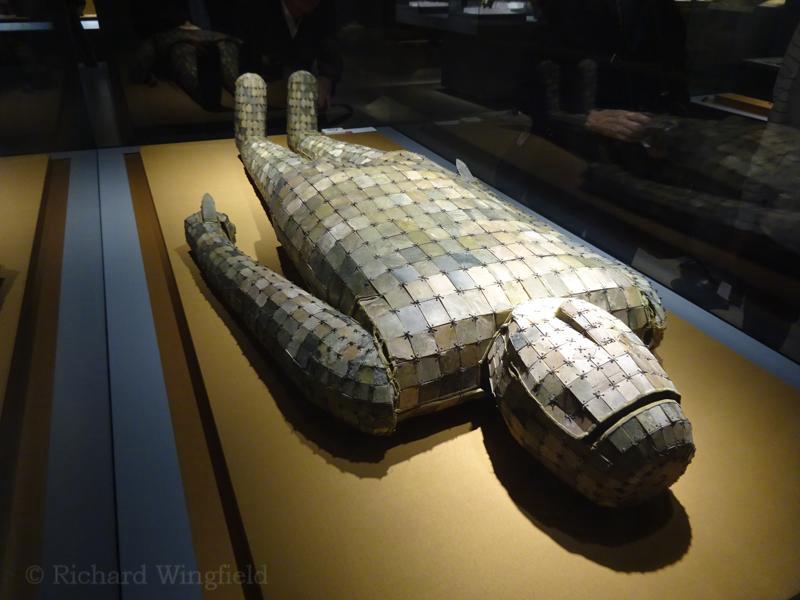
There are many sayings that mention jade. Just as in English where ‘rough diamond’ is used to describe an uncouth rascal, in Chinese there is a similar expression about roughly hewn jade. Here are some proverbs concerning jade:
Book of Changes - Deciphered

The Yi Jing is the premier ancient classic in China, and yet at the heart of this very strange but important book is a mystery that has remained unsolved for 3,000 years. The ‘Book of Changes - Deciphered’ describes the history and importance of the Yi Jing (I Ching) and proposes a new solution to the ancient mystery. Buying a copy will help support Chinasage. Now also available in Kindle eBook format for just $5.99.
Details... ➚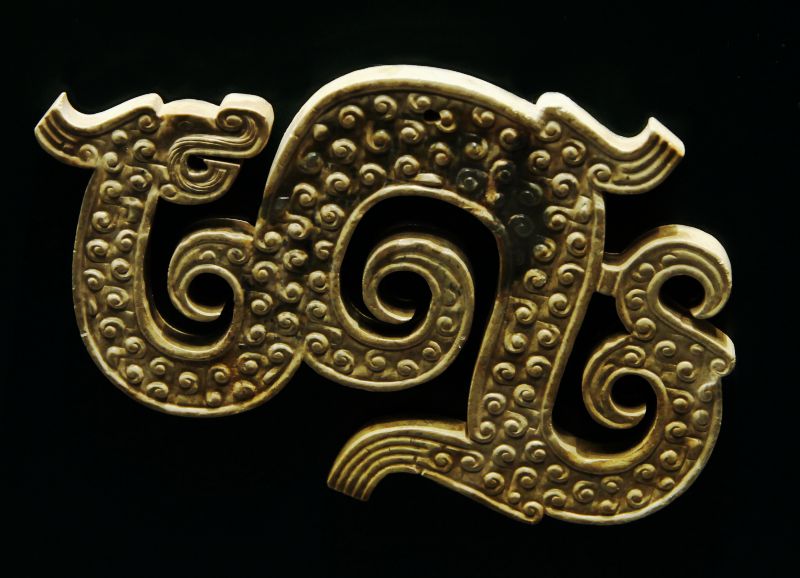
Jade remains a prized gemstone and is sculpted into wonderful jewelry and ornaments. Traditionally it was worked by a foot driven treadle that drove disks covered in quartz sand, the particles are harder than jade and would slowly cut into the surface. More recently machines with diamond or carborundum studded disks can much more rapidly fashion jade. Qingtian, Zhejiang; Shoushan, Fujian and Luoyang, Hunan are noted centers for working in jade.

